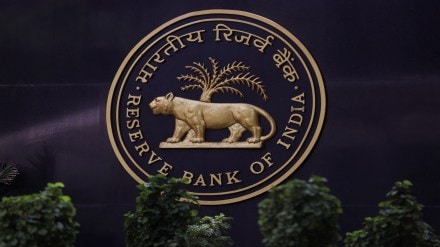By Renu Kohli
The shockingly low 5.4% growth in July-September 2024 compelled the Reserve Bank of India (RBI) to sharply cut its growth forecast to 6.6% for FY25. It remains sanguine about growth prospects though, projecting a sharper recovery ahead. Believing the low outturn is an outlier, the central bank cautioned it would be inappropriate to judge the trend growth rate by one data point. However, the question is not the single data point but the sheer range of forecast error. If this slowing was due to short-term idiosyncratic factors, then why did most nowcast models miss it by such a wide margin? The curiosity therefore is to not ignore the outlier but look within for any hidden message we must discern.
The context is clear. The brisk post-pandemic recovery generated optimism in some quarters, including the central bank, about a trend lift in India’s growth. Stable macroeconomic conditions, cleaner corporate and bank balance sheets, and settled reforms triggered hopes the growth momentum would sustain. Perhaps, this unanticipated crash indicated the economy could be normalising to pre-Covid potential? If yes, it calls for earnest dissection.
Historically, economies witnessing a trend growth shift were often driven by few leading sectors — the so-called growth engines. The sectors’ performance would be visible, sustaining for long periods to lift the rest of the economy. A better way, therefore, would be to look at India’s individual sectors to see if any fits the bill.
We look back at the post-2000 quarterly growth rates to isolate phases of high, sustained growth rate exceeding 8.0% for four consecutive quarters to distinguish differences in the high-growth phase of the first decade and years thereafter.
Start with the supply side, manufacturing sector (17.4% gross value added or GVA share) where growth plunged to 2.2% last September quarter, pulling down the previous four-quarter average, 10.5%. Indeed, if we see Indian manufacturing’s quarterly growth since 2012-13 (base 2011-12), there’s extreme volatility — the high-growth phases last no more than four to six quarters, followed by visible slowing after each such burst (figure 1). Contrast that with the previous decade’s experience (base 2004-05); manufacturing grew a solid 10% or above on average, consistently over 14 quarters beginning Q1FY06 through Q2FY09 and supporting the case for a trend lift.
So, how should we look at the 2.2% growth in Q2FY25? Should we ignore it or view it as the repeat of a past pattern, perhaps indicating the short-run burst of growth (possibly from idiosyncratic factors) may have come to an end?
Services, namely trade, hotels, transport, and communication (18.6% GVA share) saw similar volatility (figure 2), importantly losing momentum in the post-Covid recovery phase as growth averaged much below 8% in recent quarters — 5.7% in the last five. Financial, real estate, and professional services (23.3% GVA share) — which were relatively less volatile until Q2FY17 — have become much weaker, growing an average 6.9% in the past five quarters. Construction activities, which were completely down until Q2FY21, have recovered to a 10-quarter average growth of 9.4%; but at 9.0% share in GVA, it lacks vigour to lift the overall economy that has slowed down in recent months.
The story is no different on the demand side. Gross fixed capital formation (33.5% GVA share) continued to languish despite cleaner corporate balance sheets. Investment pickups have rarely sustained beyond four-five quarters (figure 4). Moreover, a large chunk is government capex, of the Centre and states. This, however, has run its course as fiscal balances need consolidating. Determining the pace could be a policy choice, although there’s little doubt that the space has shrunk. It is time to rebuild, sooner the better.
Similarly, private final consumption expenditure (55.8% share in GDP) has been a tale of secular weakness, driven by policy shocks like demonetisation, goods and services tax reform, and non-banking financial company (NBFC) crises, natural calamities like Covid and climate change, poor employment creation, and high food inflation. As has been the story so far, as rural consumption began recovering with favourable terms of trade, the urban counterpart faltered as banks, NBFCs, and microfinance institutions hit the wall on unsecured loans.
Exports, where a strong momentum sustained for eight quarters from Q1FY22, could not capitalise on these gains despite healthy services’ exports led by global capability centre boom. Recent quarters show weaker goods exports, notwithstanding headline-grabbing smartphone shipments. The failure to penetrate international markets for labour-intensive manufactured goods continues to haunt India’s growth and employment prospects.
From a growth accounting perspective, the case is equally unconvincing. While efficiency gains may have accrued from easier business practices, market integration, formalisation, and digitalisation, there are no secular trends. More concerning, as the RBI’s recent research finds, sectors seeing large increase in productivity growth also showed falling growth of employment and capital, raising doubts that matching gains from resource reallocation could be tapped (RBI Bulletin, January 2023).
Thus, whichever way one looks at the economy, one cannot identify any dependable sector or source that could drive growth on a sustained basis. Growth spurts in the sub-sectors or sources are short-lived, often slowing sharply after a brief spell, exhibiting volatility. Statistically, a trend is difficult to fit. Obtaining a trend from the aggregate could sometimes be misleading — a growth spurt in one sector could conceal slowing of another. Taking a judgement call on the potential growth rate for such an economy could, therefore, be tedious. And to believe the economy might have experienced a trend growth lift during post-Covid catch-up is premature.
The writer is senior fellow, Centre for Social & Economic Progress (CSEP), New Delhi.
Disclaimer: Views expressed are personal and do not reflect the official position or policy of FinancialExpress.com. Reproducing this content without permission is prohibited.
